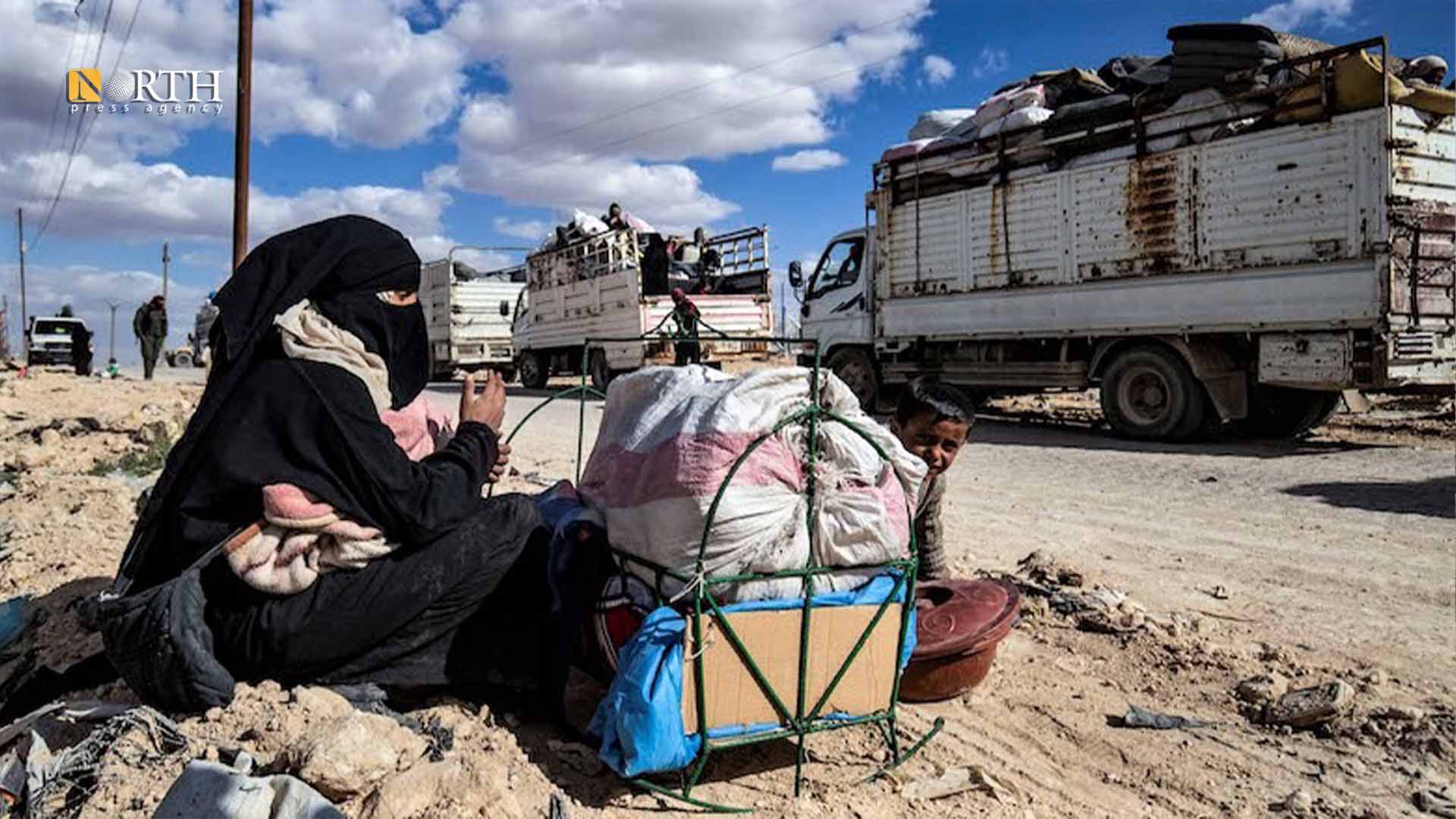DEIR EZ-ZOR, Syria (North Press) – Yaser al-Khanafeh, 37, left Hawl Camp two months ago and went to his hometown in the Baghouz town, 130 km east of Deir ez-Zor, eastern Syria.
Al-Khanafeh searches for a way to rebuild his houses. He is unemployed and so cannot afford reconstruction costs.
“The living situation here is worse and NGOs do not support him,” he complained.
Al-Khanafeh, his family and around 200 people left the notorious camp within the 19th batch of Syrians leaving Hawl Camp. The batch included 48 families.
In October 2020, the Executive Council of the Autonomous Administration of North and East Syria (AANES) decided to evacuate the Syrian families from the Hawl Camp following an initiative by the Syrian Democratic Council (SDC) and dignitaries to permit the Syrians wishing to leave.
Rebuilding local relations
On October 21, the 18th batch of Syrian families including 74 individuals, left Hawl Camp for their hometowns in the eastern countryside of Deir ez-Zor.
At first, al-Khanafeh’s family name was not recorded in the list allowed to leave. Later, his name came and he was so delighted.
However, the majority of those who evacuated from the Hawl Camp and who specifically settled down in Deir ez-Zor complain that they have got no income to sustain their families, and that humanitarian relief aid is absent.
Despite spread of unemployment and deteriorating living conditions in Baghouz, al-Khanafeh said he is back to life again. “All my relatives and neighbors welcomed us the moment we got Baghouz. I thought they would be afraid to deal with us, but it was just a thought”.
The first step al-Khanafeh took was to send his four children back to school. This will help accelerating their reintegration into society.
However, the real problem they are facing currently is that the father is unemployed.
It was so terrifying
In late 2019, when violent battles in Baghouz took place, al-Khanafeh and his family left the town ending up in the most notorious camp worldwide.
He recalled murders in the camp, “there in the darkness, at the time of sunset, no one knows what will happen to him/her. You just wait till it is morning again”.
“You are waiting for your death at any moment. You do not know who your killer will be, and every day we hear that some camp residents have been assassinated.”
“It became more terrifying with the sunset,” he added.
Absence of aid
Nasser al-Hamad, 22, who has returned from Hawl Camp to the town of Baghouz, found that one of his houses had been burnt and the other destroyed during the battles to expel ISIS militants from the town at the hands of the Syrian Democratic Forces (SDF).
Al-Hamad and his family of 12 are currently residing in his house after he repaired some of it with the help of his neighbors and relatives in the town.
The man is waiting for a job opportunity to support his family after learning that he will not be able to rebuild his destroyed house, except with the help of humanitarian organizations.
Although the young man works in construction and carpentry, he is still without work until now.
The family did not receive any support from any international, local or civil relief agency, and even relatives suffer from poor financial conditions themselves, according to al-Hamad.
“Don’t look at them as terrorists”
Thib al-Dawoud, 55, a well-known person in the town of Baghouz, said that families returning from Hawl face a difficult reality with their children, “they have lost all their homes and properties.”
He believes that restoring their relations in the local community may ease the suffering, calling on the residents “not to see them as bullying or as ISIS, and to deal with them in a way that does not make them feel that they are being ostracized.”
Al-Dawoud added told North Press that some residents provided simple in-kind assistance to those who left Hawl Camp, such as sponges and mattresses, but it is not enough.
He said that these families need assistance to help them rebuild their houses because their financial means cannot afford it.

